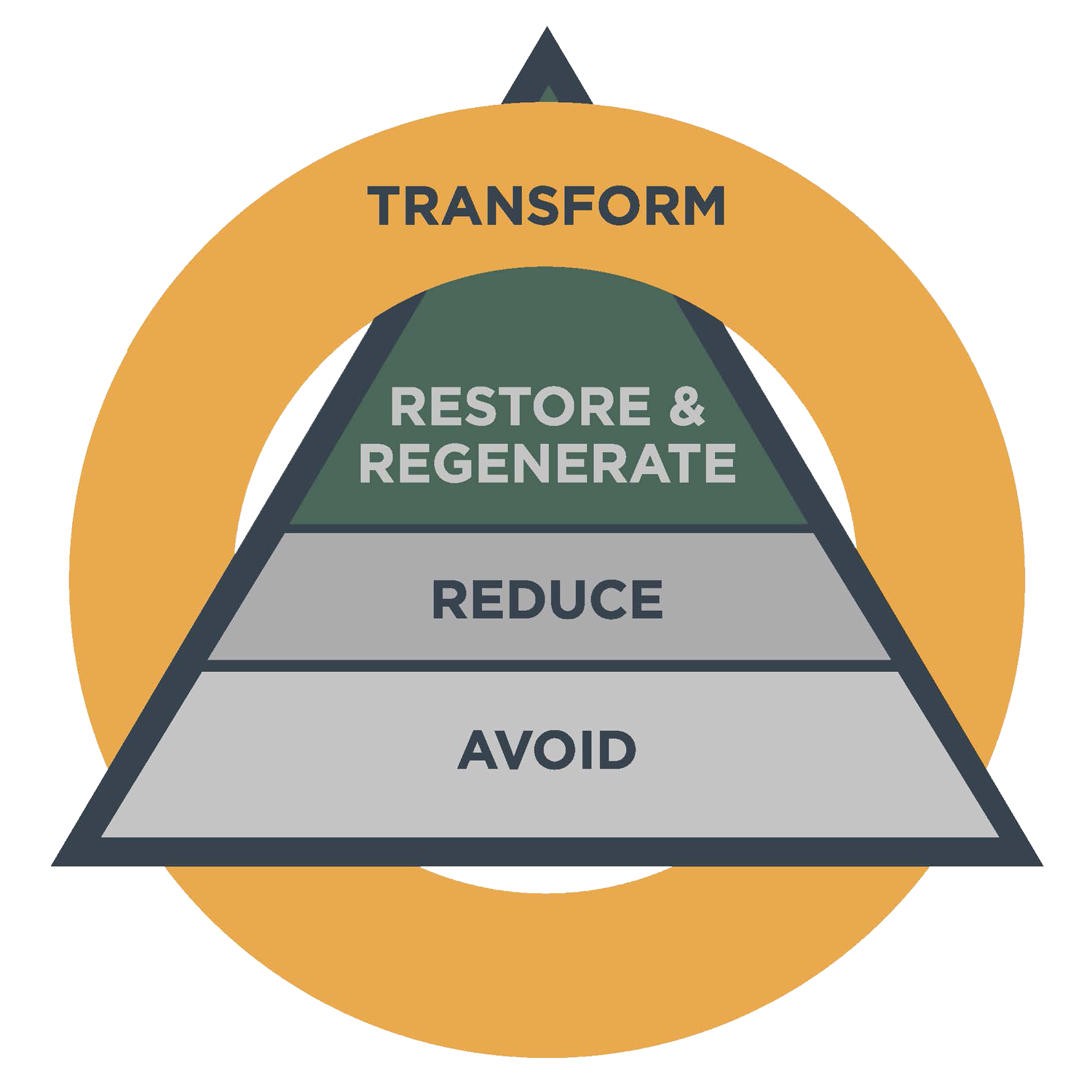Target setting process questions
Here we provide answers to common technical questions that companies have as they are going through the target-setting process.
If we wish to live in a nature-positive world, we need urgent and ambitious action by everyone.
In SBTN’s Initial Guidance for Business (2020), we introduced the Action Framework (AR3T). We call this AR3T because it is a general framework for company action:

The AR3T framework was developed on the basis of the mitigation hierarchy, set out in the International Financial Corporation’s Performance Standard 6.
Use our interactive action framework below to see the types of actions companies will take when implementing science-based targets for nature.
Use our interactive action framework below to see the types of actions companies will take when implementing science-based targets for nature.
Detailed guidance on target implementation (Step 4: Act) is in the development pipeline. The current Freshwater and Land methods explore some examples of corporate action options for target implementation, given the potential for unintended consequences for nature and people as a result of some corporate actions. In this context, action options refer to the actions that a company could take when implementing science-based targets for nature to make progress toward its achievement — likely reflected in the target indicator – that results in improvements in the State of Nature.
The Response Options Database provides initial resources for companies to take actions that make a difference for nature on the ground. This is a preliminary effort that anticipates more comprehensive guidance to be released in 2025.
In terms of corporate action options, the Step 3 Freshwater targets for quantity and quality, as well as the Step 3 Land targets on No Conversion and Land Footprint Reduction, focus primarily on avoidance and reduction actions, while the Landscape Engagement target primarily drives regeneration and restoration actions. In all cases, implementing the full framework will help companies reach their targets more effectively and generate positive, long-lasting changes in the landscape.
While Step 4. Act guidance is being developed, companies participating in the SBTN initial target validation pilot are helping inform the development of location-specific Corporate Action Plans. These action plans will explain how companies intend to meet each of their targets and include four sections:
These action plans are a requirement for companies to meet their targets, as they help ensure that companies have sufficient resourcing and planning in place to achieve the targets they set. The Corporate Action Plans will inform, and potentially become part of, the upcoming technical guidance for Step 4. Act.